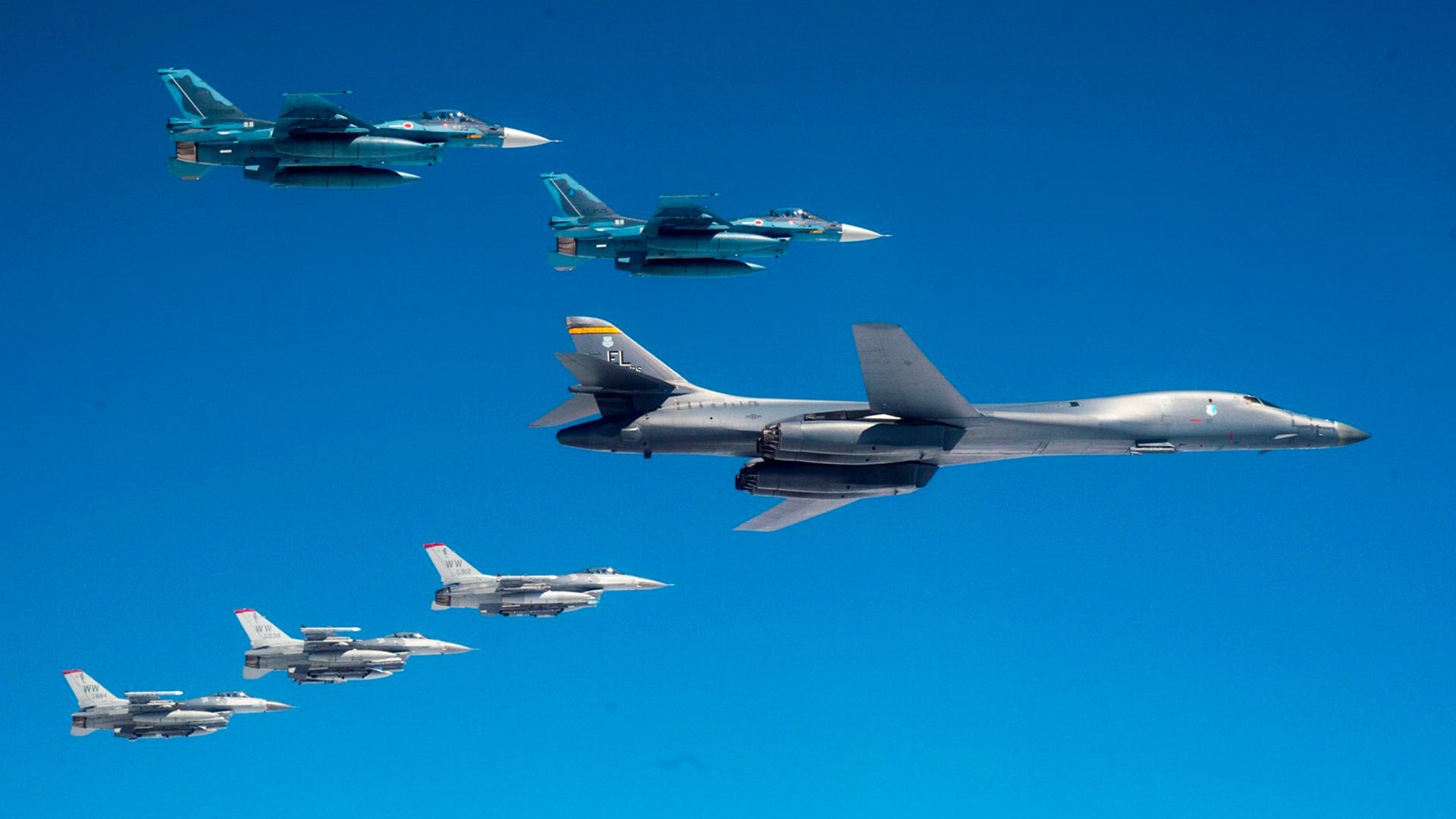The War Zone, with the help of our friend @Aircraftspots, was first to report on a peculiar B-1B mission that sent the swing-wing bomber over the Bering Sea, past Russia’s Kamchatka Peninsula, and around Japan yesterday. At the time it wasn’t clear if the bomber would land somewhere in the region or if it was a round-trip, ultra-long-range ‘global power’ sortie. It turns out it was the latter and now U.S. Pacific Air Forces has photos to show for it.
@Aircraftspots continued to track the B-1B after our initial report. It circumnavigated much of Japan before getting refueled off the country’s northeastern coast where it was also met by USAF Air Force F-16CJ and Japan Air Self Defense Force F-2 fighters. As you can see, nobody was going to let the moment go to waste:
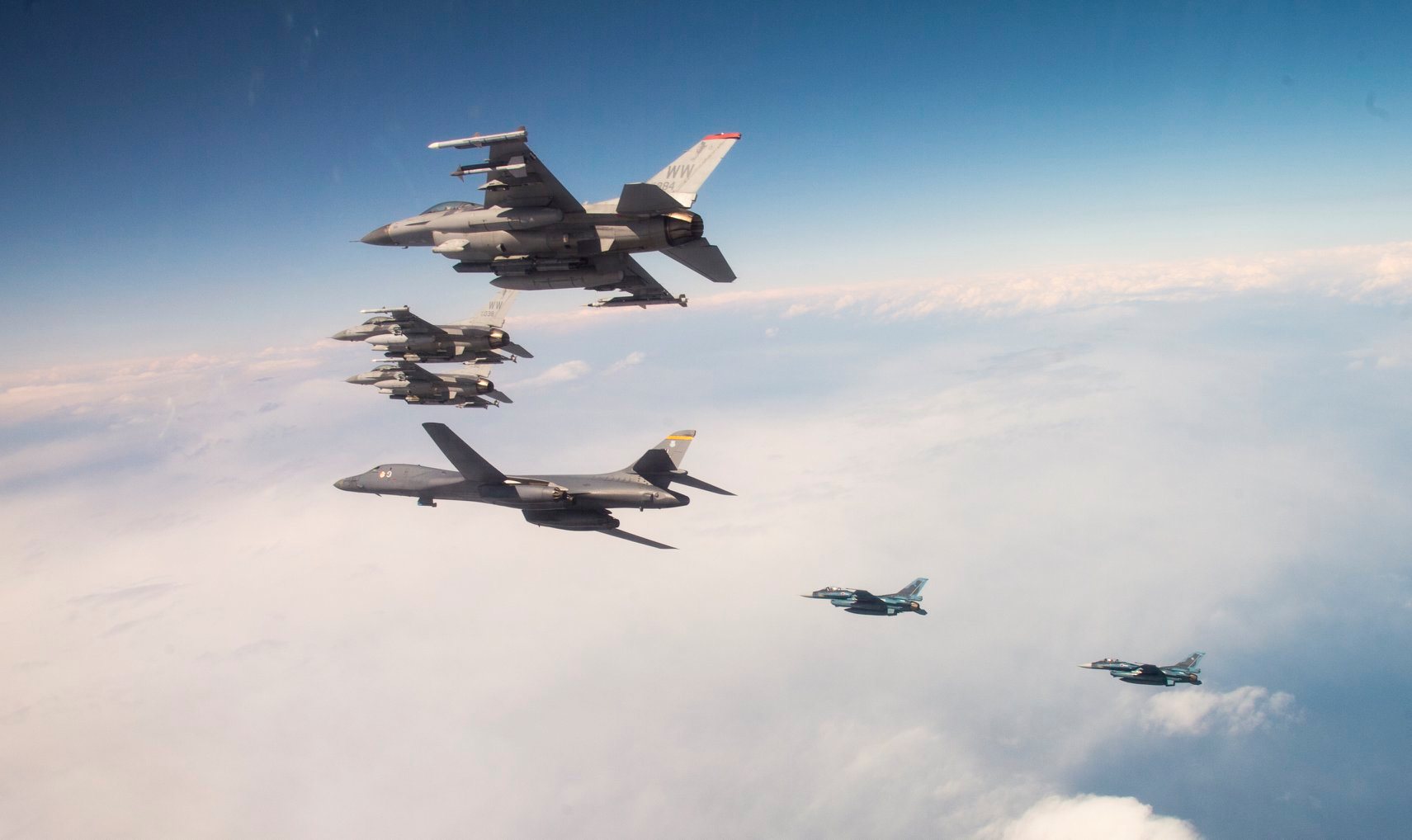
After the training and photo-op, the B-1B made its way all the way back to its home in South Dakota, ending what was an incredibly long and complex sortie that was clearly aimed at reminding America’s foes in the region that the U.S. can project power far from the mainland.
This is especially critical now after the continuous bomber presence on the Island of Guam has officially ended after 16 years, another story The War Zone
was first to report on. The Air Force says it is now opting for a far less predictable bomber strategy in the region. This flight would be the first example of that new strategy.
Even the jet’s callsign, HYPER21, may be a signal to regional adversaries. Substantial news was made just weeks ago when a the head of Global Strike Command stated that the B-1B will likely receive the ability to carry dozens of hypersonic weapons in the not so distant future. As such, the odd callsign would make some sense, although we cannot say that was indeed the case for certain.
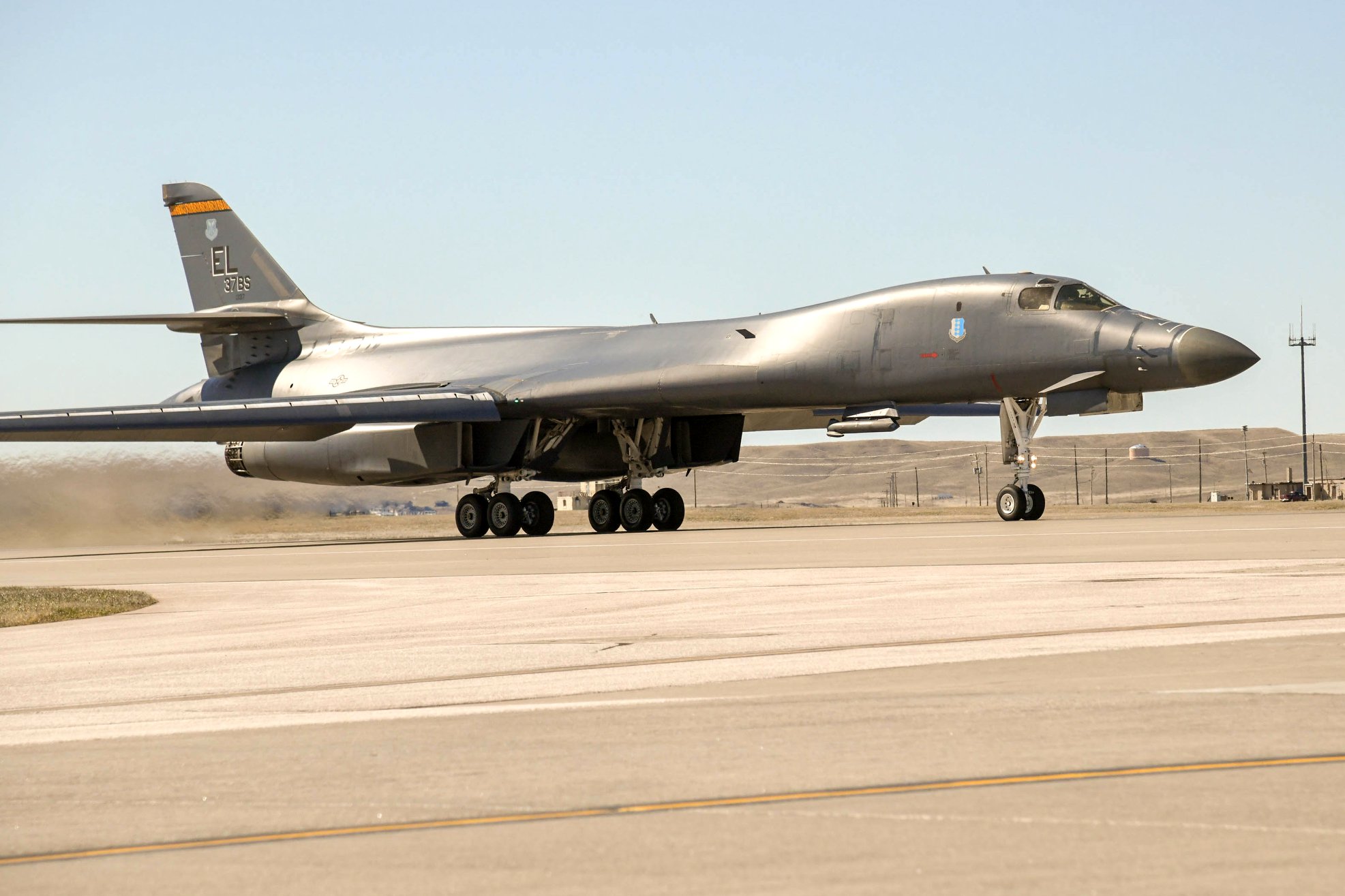
Rest assured this will be the first of many flights like it that will occur in the days, weeks, and months ahead. We will also likely see bombers deploy to various bases in the region for short periods of time before heading back to the United States.
Regardless, the Air Force is clearly doing what it can to remind adversaries that while their bomber forces may be gone from the region, they should not be forgotten.
We will update this post when more information comes available about this important flight.
UPDATE: 5:50PM PST—
We have additional photos and full release from Pacific Air Forces. The statement reads, in full:
In demonstration of the U.S. Air Force’s dynamic force employment model, a U.S. Air Force B-1B Lancer bomber flew from the continental United States and integrated with the Koku Jieitai (Japan Air Self Defense Force or JASDF) to conduct bilateral and theater familiarization training near Japan April 22.
The B-1, flew a 30-hour round-trip sortie from Ellsworth Air Force Base, S.D., to the Indo-Pacific and teamed up with six U.S. Air Force F-16 Fighting Falcons, seven JASDF F-2s and eight JASDF F-15s over Draughon Range near Misawa as part of a joint U.S. Indo-Pacific Command (INDOPACOM) U.S. Strategic Command (USSTRATCOM) Bomber Task Force (BTF) mission before returning home.
“This operation showcases our unwavering commitment to the security and stability of the Indo-Pacific region through the employment of strategic forces from around the globe,” said Gen. CQ Brown, Jr., Pacific Air Forces and INDOPACOM Air Component commander. “From confronting invisible threats of a global pandemic to addressing military aggression and coercive activities, we remain a lethal, innovative and interoperable force focused on a shared vision of upholding a free and open lndo-Pacific.”
In line with the National Defense Strategy’s objectives of strategic predictability and operational unpredictability, the U.S. Air Force transitioned its force employment model to enable strategic bombers to operate forward in the Indo-Pacific region from a broader array of overseas and CONUS locations with greater operational resilience.
“Like the advancements of our Agile Combat Employment concept of operations, we continue to innovate and adapt our approach, to include how we deploy and employ the various weapons systems we integrate with our allies and partners,” Brown said. “Bringing the B-1 into theater ensures our bilateral interoperability accounts for any combination of flying operations to prepare for and outpace the rapidly growing threats in the Indo-Pacific region.”
This marks the second CONUS-based bomber bilateral training to occur this year with the JASDF. On Feb. 3, two B-52s integrated with six USAF F-16s and more than 45 JASDF fighter aircraft in the vicinity of Misawa Air Base, Japan. Those bombers flew from Andersen Air Force Base, Guam, and Minot Air Force Base, N.D.
“The rapid employment of airpower directly supports the National Defense Strategy and assures we can provide overwhelming force anywhere, anytime in support of American interests or our Allies and partners,” said Gen. Tim Ray, Air Force Global Strike Command and Air Forces-Strategic commander. “This mission is a demonstration to our friends throughout the region: we will continue to remain fully predictable in our commitment to ensuring peace, while also demonstrating that we have the ability to operate from numerous locations across the globe, even during the global pandemic.”
The B-1 is assigned to the 28th Bomb Wing and the F-16s are assigned to the 35th Fighter Wing from Misawa Air Base, Japan.
The last time the B-1 was in the INDOPACOM area of responsibility was January 2018, when the airframe and crews completed a six-month Continuous Bomber Presence mission at Andersen. During that time, the 9th Expeditionary Bomb Squadron from Dyess Force Base, Texas, conducted a number of sequenced bilateral missions with the Republic of Korea Air Force and the JASDF.
USSTRATCOM has conducted BTF missions (previously known as Bomber Assurance and Deterrence missions) since 2014 as a demonstration of the U.S. commitment to collective security, and to integrate with Geographic Combatant Command operations. The first mission included B-52H Stratofortresses and B-2 Spirits traveling from the continental United States to Joint Base Pearl-Harbor Hickam in April 2014.
Here are some additional shots:
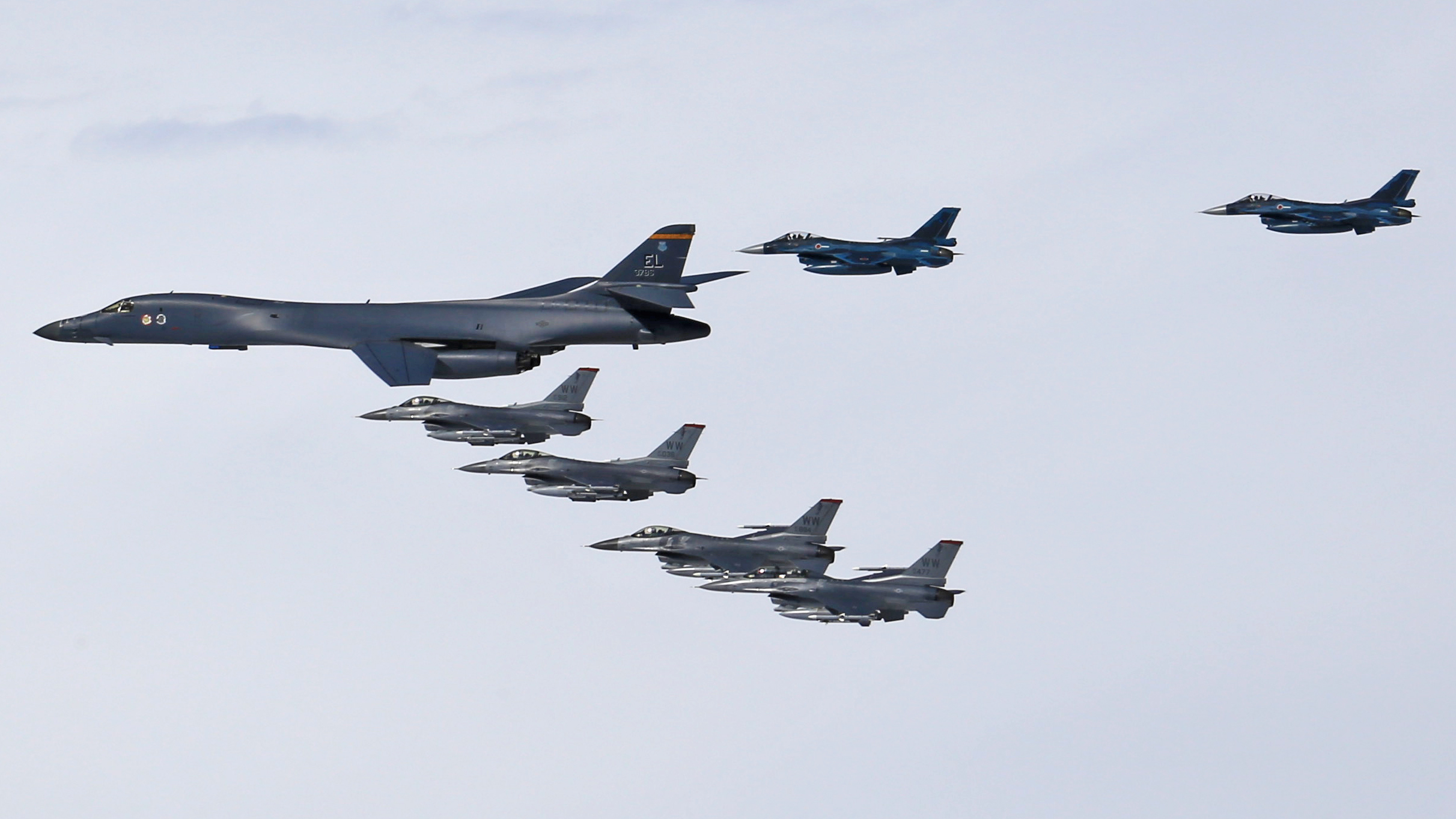
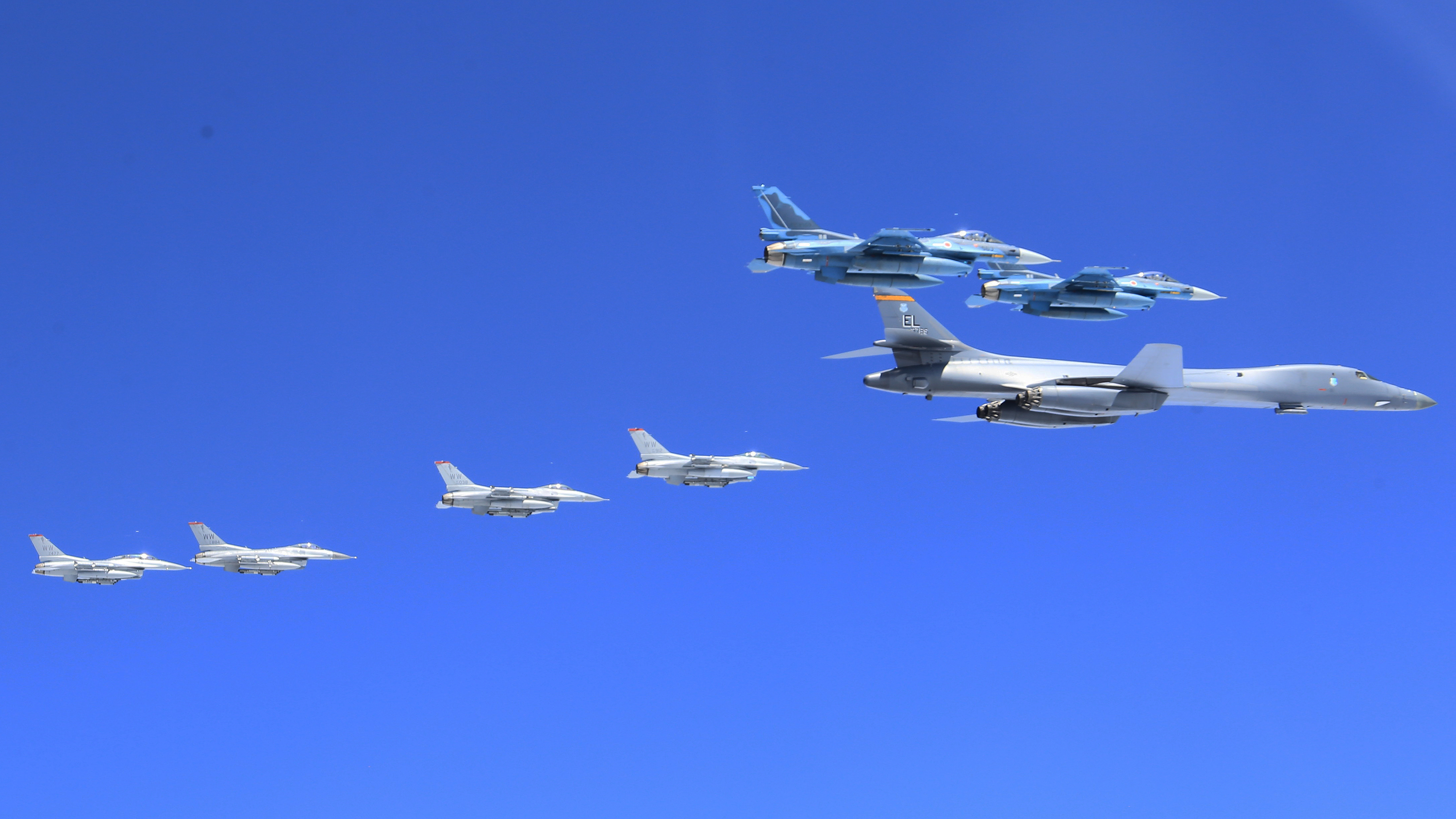
Contact the author: Tyler@thedrive.com
